Udaipur - the state of Heritage and Conservation
Established in 15th century, Udaipur has a significant asset of heritage in its historic core. Heritage of the Udaipur contributes to the image of the city. Diversity of attractions and traditions plays a major role in establishing the Udaipur city’s identity as ‘city of lakes’ and heritage tourist destination. These heritage assets gave identity to the individual and sense of belongings.
Indian cities are a product of historicity, embedded cultural systems and rich human centric inter linkages. The Indian cities are known for their heritage; tangible and intangible. At the cusp of rapid urbanization, in the context of developing countries like India, large number of urban areas have significant cultural heritage embodied in their built environment, specifically within their urban historic cores.
However, these urban centres face the risk of losing their distinctive character while they strive to modernize, in order to overcome the pressures of globalization on one hand and urbanization on the other (Amira Elnokaly, 2011). In today's world, they are facing the crisis of Global envisioning of place making through various schemes and policies rolled out by Indian government. The enmeshed morphological conditions, local hybrid cultural institutions, various communities and socio-cultural identities and territories are at the edge of transformation at massive scale.
The historic core reflects the Udaipur’s rich Rajputana heritage, architecture and culture. The morphology and planning of the walled city is organic in nature. Major streets form the major nodes which act as landmark. The historic core is a living heritage where markets and residential clusters coexist. The major spine has commercial shops with houses and inner lanes have residential quarters with temples and other cultural assets. The markets are based on the commodities and communities which also form the major intangible heritage in the city. The built form be it Palaces, Ghats, Havelis, Pols, Houses and Temples borrow heavily the elements of Jharokhas, Gokhras, Pols, Ada dwars and central courtyard. What adds to the sense of place is the presence of active tissue and activities on the streets and nodes. The tangible built form and intangible activities form a strong networked condition of heritage. Each street, every cluster has a mix of both – historic built form and traditional customs and practices. The architectural style, associational value of community with historic core, the economic and livelihood activities, the tourist circuits make it a thriving cultural heritage.
With the pressure of development, the historic core of Udaipur is over burdened with issues related to crumbling heritage. The transformation of indigenous character to facilitate global forces has led to a situation where local cultural heritage is at loss. Alteration and additions of the floor in historic buildings, changes in daily activity pattern lead to disturbing the social and the physical characteristics of the city. The loss in the sense of street, architectural character’s transformation, increasing tourism industry activities change the uses of historic significant assets.
Change in land use and built form to facilitate tourism related activities has resulted in Gentrification and loss of community’s association with the heritage. Insensitive development, congestion of vehicles, loss in visual integrity due to alteration and additions of foreign elements lead to massive transformation in historic built form. The original communities have lost association with the core and have moved out to the newer settlements. This also impacts the intangible heritage of crafts and aboriginal livelihoods; making them just a commodity suited for tourist sale. Lack of heritage management and conservation guidelines have made it more vulnerable to the triggers of over tourism, Globalization and changing associational values of inhabitants.
The approach of heritage conservation in Udaipur has largely been monumental. Major tourist destinations like Palaces, Havelis and Ghats have been restored, conserved and adaptively reused to capacitate the tourism. However, the urban heritage or the living heritage hasn’t been given its due in form of conservation. The intangible heritage of living market and make shift commodities, arts and crafts has seen commodification rather than restoration and conservation. With the recent rolled out Smart city mission, Udaipur has shifted its view towards the living heritage and built form. The proposal for the conservation has included the markets, residential quarters and clusters with cultural assets. However, in its execution, it looks more on the side of beautification rather than heritage conservation. The city still lacks heritage management plan for the core area. Lack of guidelines for urban conservation of heritage fabric and Development control guidelines for historic core, Lack of monitoring plan for commercial activities and demarcation of historic zones has intensified the threats on urban heritage of Udaipur.
The whole paradigm of heritage conservation has objectified and materialized the places of historic importance. This has led to the low prioritization of the social value of these heritage places. The association of people to their heritage includes the meanings assigned to these places that become a part of the significance, particularly the social significance. To get into the depths of the social significance of a heritage place, it is important to look at the associated local communities and the worlds of ordinary people. The development of new colonies which broke from the tradition while the feel of historicity that still remains within the walled city presents the dilemma of finding a new face to the Udaipur of tomorrow. While political developments and social currents slowly moulded the city’s face over four hundred years, vulnerabilities scare the city’s way of survival producing entirely new economic contours that were unthinkable. Regeneration and development is important for any city, but is it really worth at the stake of complete erasure of its past, the way the city was built and the various factors that helped the city grow and survive.
Udaipur needs a comprehensive plan based on its cultural and heritage assets. It has to be envisioned through urban policies and schemes. Here are a few suggestions that can aid in conservation of heritage in the historic core of Udaipur -
- Delineation of various historic zones, Grading and listing of buildings and development of urban conservation guidelines.
- Preparation of Area based development plans for walled city by keeping heritage at its centre.
- Restoration and adaptive re use of community spaces to enhance the association of the community.
- Creation of heritage funds and committees to upkeep the historic core needs to be formed at the level of local government.
- Awareness programs and education drives to update the locals with their indigenous cultural heritage and ways to restore and conserve them.
- Promotion of intangibles like arts, crafts, cuisine, traditional livelihoods, fashion to enhance their visibility and usage in the local crowd.
- Resurgence of cultural practices and heritage quarters by promoting active tissue.
The picture shows the various elements of historic precinct in the walled city area. These spaces with strong network of human activity make it a thriving cultural living heritage.
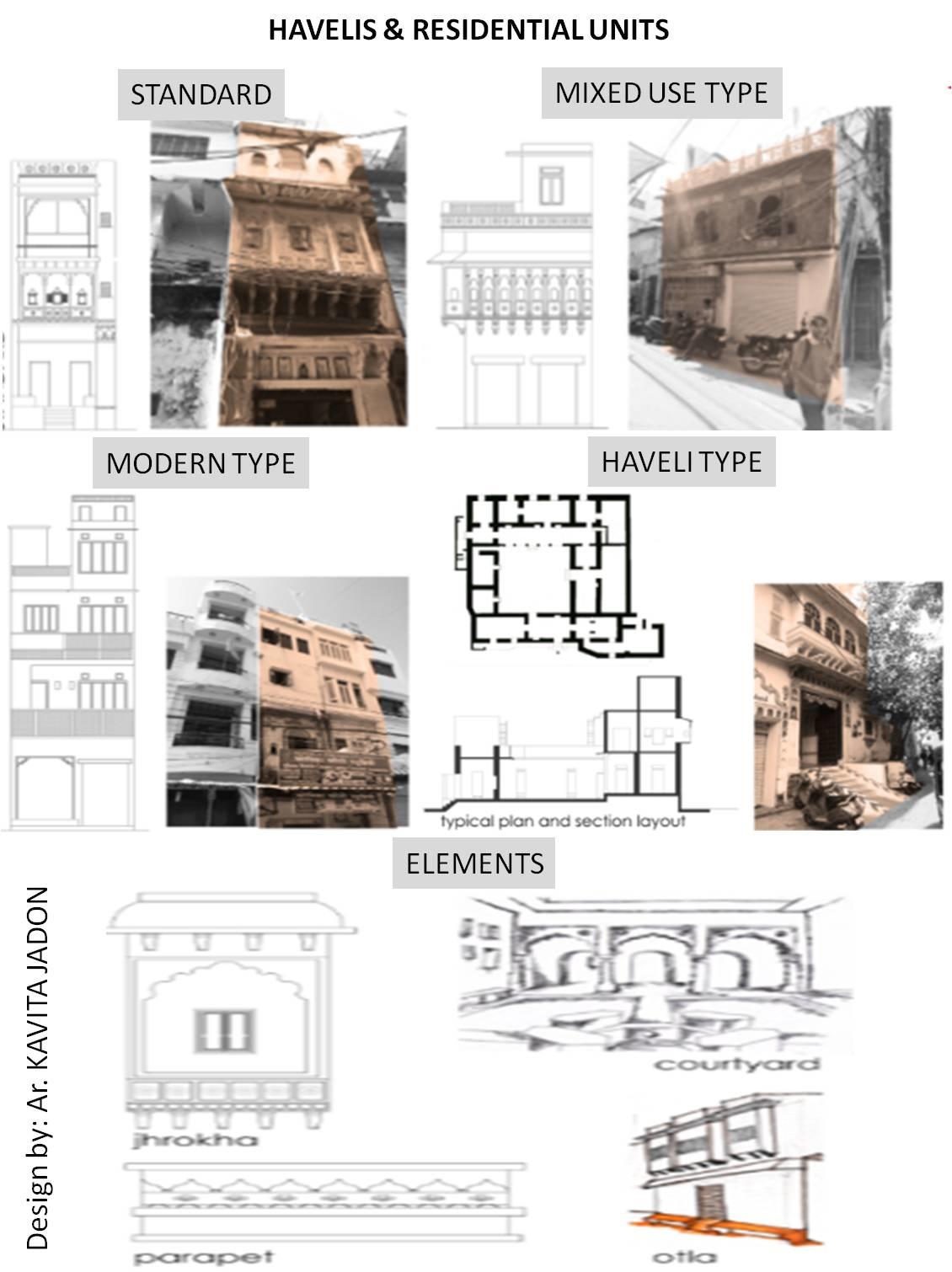
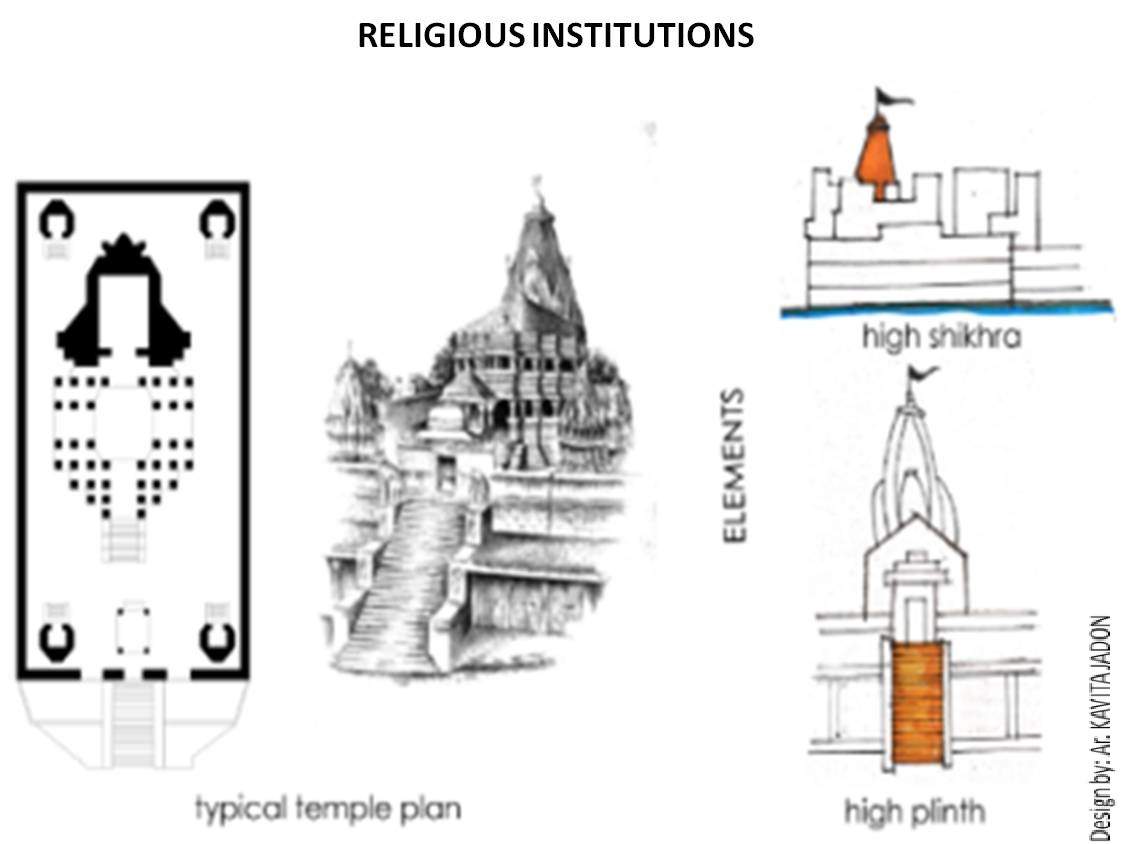
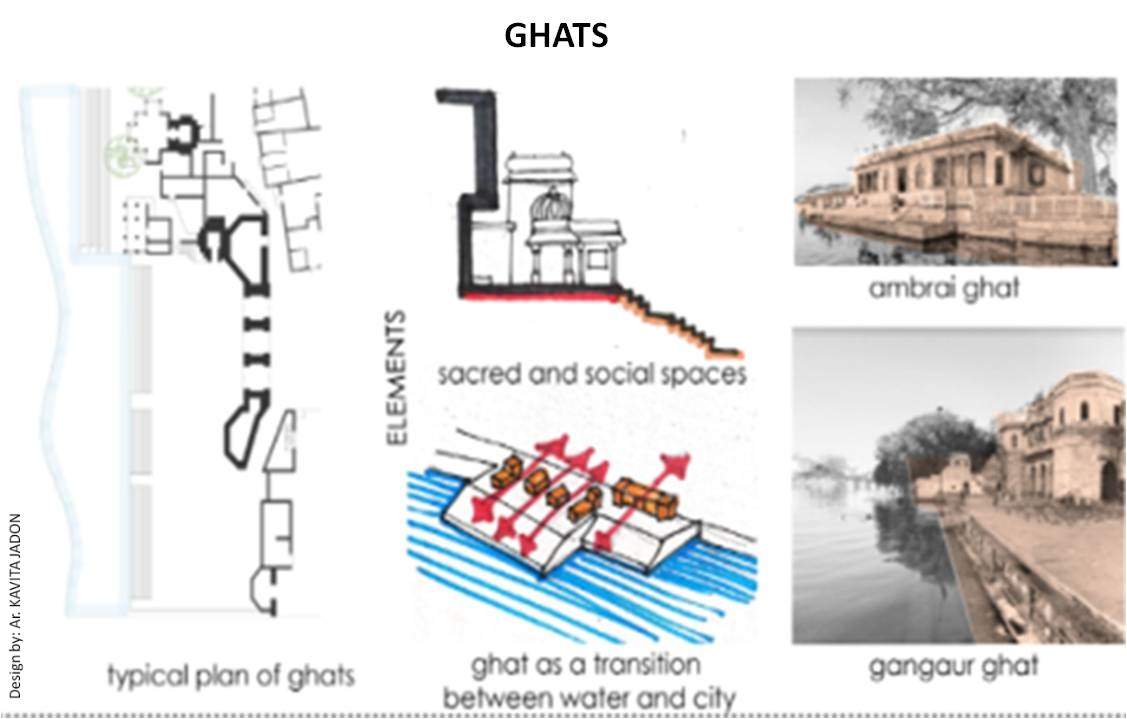
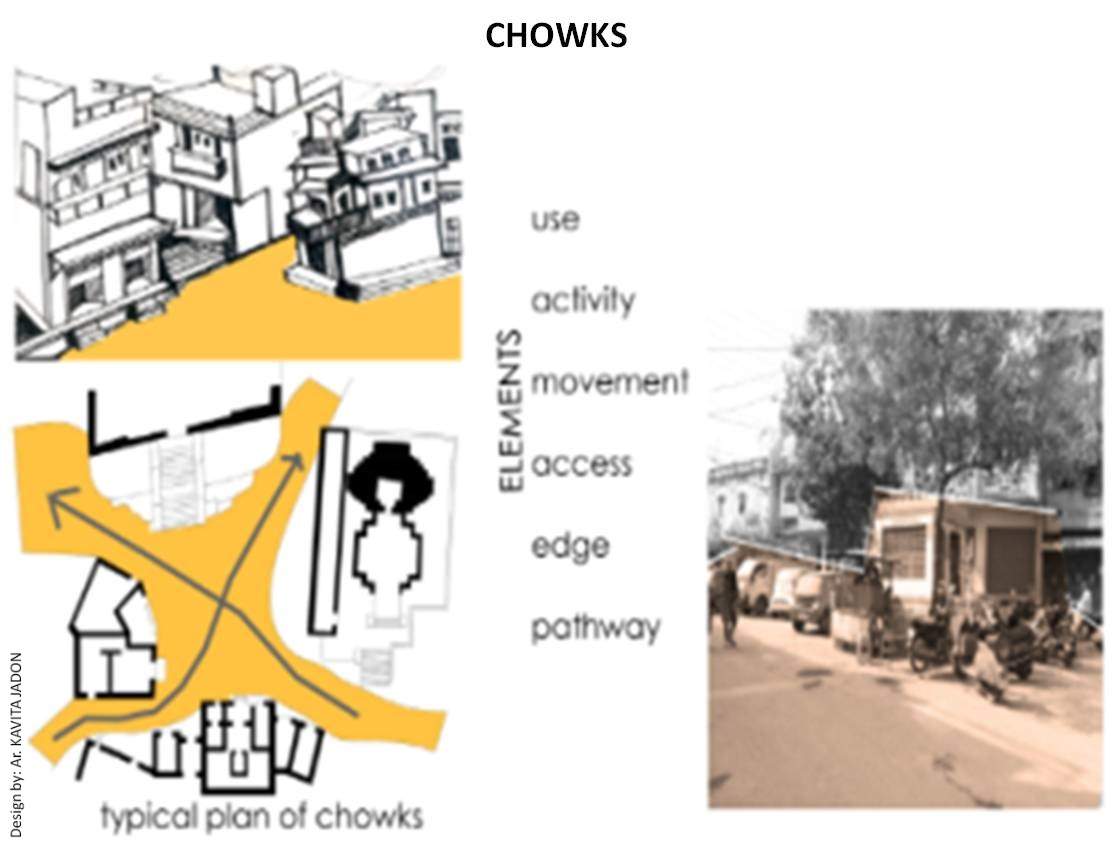
The picture shows various tangible form of heritage present in Udaipur and how it forms the urban identity of Udaipur.
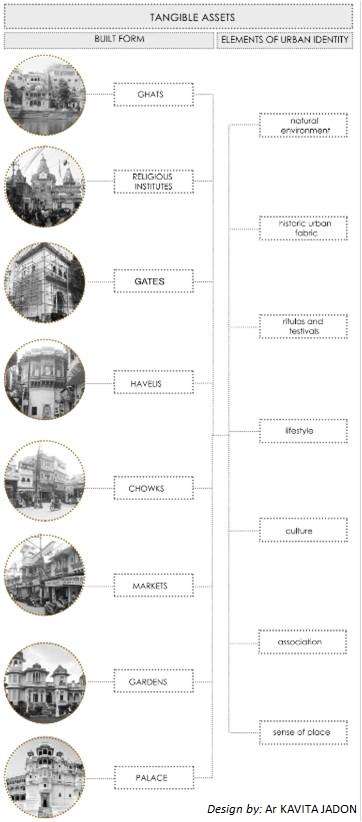
The picture shows different intangibles that have a huge associational value with the locals. They mound the everyday culture and spaces in the city.
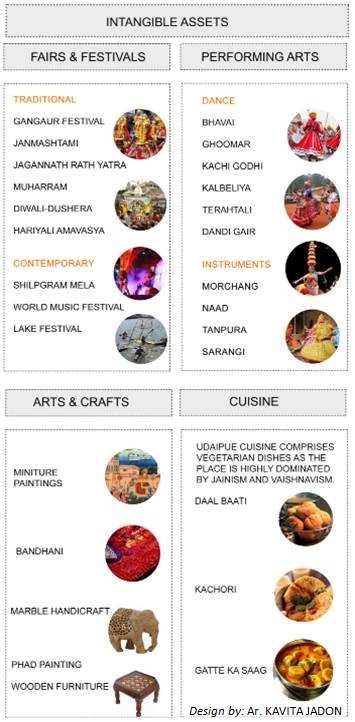
The diagram shows the issues at the historic core of Udaipur that needs to be addressed.
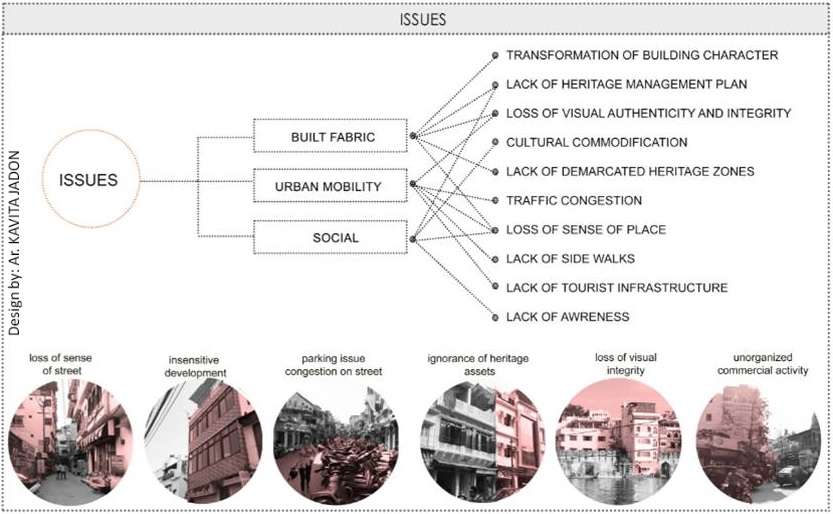
Authors:
DAKSH JAIN
Trained as an Architect (Honors in B. arch, Gold medallist; JNVU) and an Urban designer (kRVIA), Daksh Jain is a resident of Udaipur. His interests traverse in the domain of Urban planning, Urban design, Heritage conservation, Development finance and Policy framework. His works in academia follows the lines of Sociology, Ecology, Economics, Cultural studies, Informality and inclusive public oriented designs.
Currently, he is working as an independent researcher on the topic- City life, Culture and Consumption – Emerging urban phenomena.
He is also the recipient of Bhamashah Award for excellence in Academics by Eternal Mewar,Maharana Mewar Foundation in 2019.
HANISHA CHOTHANI
Hanisha Chothani is an Architect and an Urban conservationist based in Mumbai. Her works address the importance of historicity and heritage in day to day life. She has been working with Khaki labs in Mumbai to promote sustainable cultural heritage and its conservation. She is an advocate of community led heritage regeneration programs.
Born and brought up in Mumbai, her interest lies in the heritage and architectural styles of historic core of tier 2 and tier 3 cities. She has extensively documented heritage structures in Jaipur, Udaipur, Hyderabad, Jodhpur, Bhuj amongst others. She is also working on developing trails of heritage based on different themes in Mumbai.
To join us on Facebook Click Here and Subscribe to UdaipurTimes Broadcast channels on GoogleNews | Telegram | Signal


